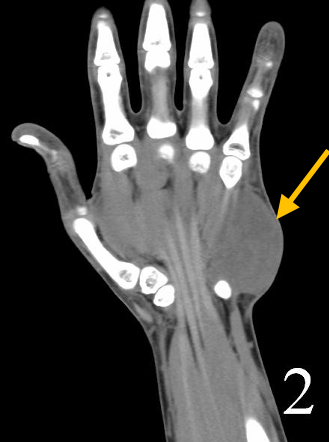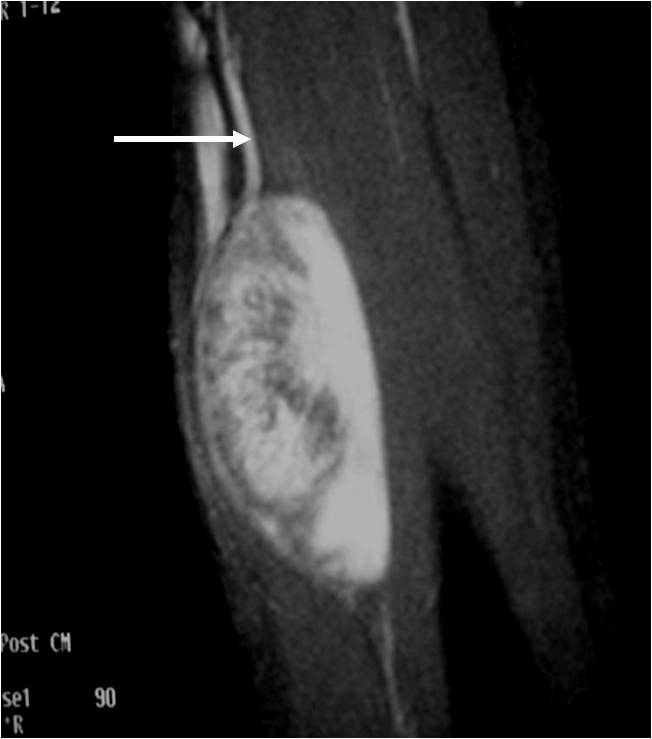What is a Rhabdomyosarcoma?
Causes
- • In most cases, the cause of rhabdomyosarcoma is not known.
Signs and Symptoms
- • Signs and symptoms include either a painful or painless mass.
Who is usually affected?
- • Slight preference for males over females.
- • Mostly seen in children, and is extremely rare in adults.
- • This condition is rare, yet one of the more common cancers seen in children.
Common Sites Involved
- • Common sites include genitourinary system, head, neck, pelvis, lower extremities. Less commonly seen in the upper extremities.
Biological Behavior
- • A cancerous soft tissue tumor from the skeletal muscle.
- • 25% of cases will invade and damage the surrounding bone.
- • High rate of spreading, or metastasis, to the lungs, lymph nodes, bone, brain and liver.
Diagnosis
- • The work-up often consists of a physical examination, X-rays, CT scans, MRI, and sometimes bone scans are required. CT scans can be used to check for subtle mineralization that may help with the diagnosis
- • CT of the chest is necessary to check for pulmonary metastases. The lungs and other bones are the to most common sites for the tumor to spread.
- • The diagnosis is often confirmed with a biopsy, which means taking a sample of tumor and having it analyzed under a microscope by a pathologist.
Risk to your limbs
Rhabdomyosarcoma are cancerous aggressive tumors that, if left unchecked, will grow and destroy your normal bone. As the tumor slowly grows, the bone is weakened and you are at an increased risk of breaking the bone due to the tumor (called a pathological fracture). They may also spread to your lungs or other bones.
Radiographic imaging is used to help form a diagnosis. These include X-Ray, MRI, CT and Bone Scans.
An example of an MRI is shown.

Treatment of Rhabdomyosarcoma
Surgery
Surgical treatment includes wide or radical resections to remove the complete tumor and additional margins. The removal of additional, surrounding margins ensures that the tumor is completely removed and decreases the chances of the tumor coming back.
Chemotherapy
Chemotherapy is a systemic treatment option for cancer, meaning the chemotherapy drugs can kill the cancerous cells that have metastasized, or spread throughout. Chemotherapy is used to treat cancer, control/prevent cancer from spreading, and ease the symptoms related to the cancer. There are various drugs used in chemotherapy, so the combinations of drugs administered and the number of cycles may differ between each person and tumor.
Radiation
Radiation is a treatment option for some cancers. Radiation therapy is a localized treatment that utilizes high-energy particles or waves to kill cancerous cells. Because radiation therapy is a localized treatment, it only affects the area in which it is set to target and therefore eliminates the risks of damaging healthy cells throughout the body. Not only is it used to treat cancer, but it can also decrease the chances of the cancer from recurring. Lastly, radiation may be used in conjunction with other treatments, such as surgery or chemotherapy, to treat cancers.






